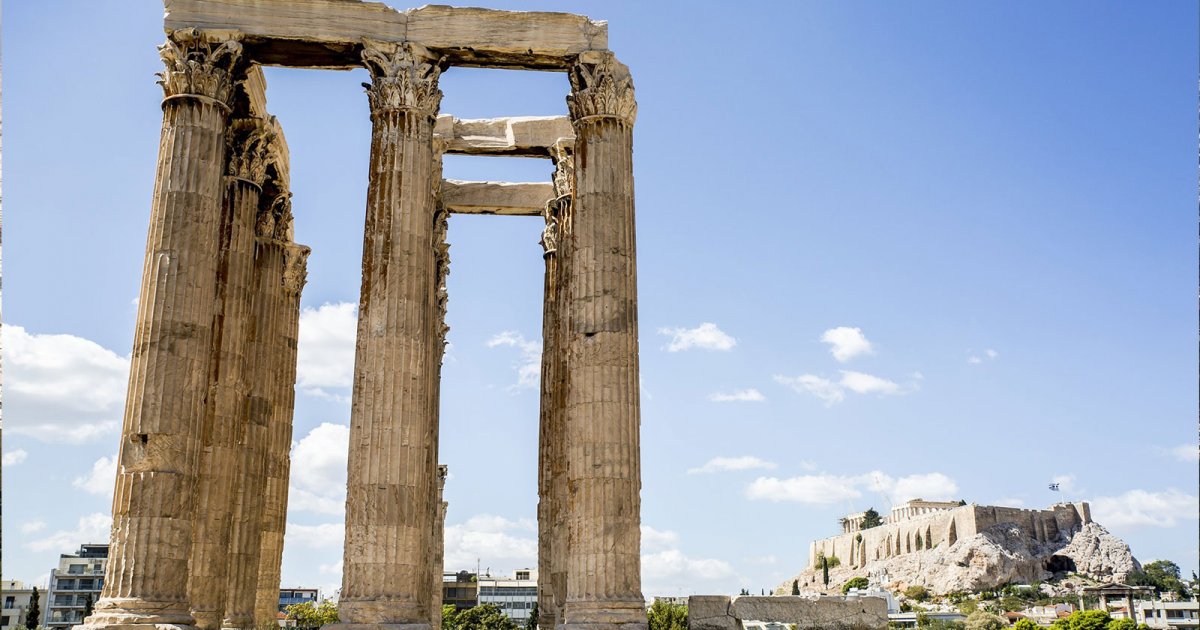TEMPLE OF OLYMPIAN ZEUS, Temple Of Olympian Zeus
 Language: English / USA
Language: English / USA
Hi, my name’s Marcy, and I’m your personal guide. Along with MyWoWo, I’d like to welcome you to one of the Wonders of the World: the Temple of Olympian Zeus.
The Temple of Olympian Zeus was the largest colossal temple in Greece and indeed one of the largest in the world during Antiquity.
The remains before you are what is left of one of the most striking temples ever built: 110 meters long and 43 meters wide, with columns over 17 meters high, like a six-storey house.
Just fifteen of the columns are still standing, but try to imagine what it must have looked like when it was complete, with three rows of eight columns on the two facades, and two rows of twenty columns on the flanks, for a total of 104.
Who was responsible for this awe-inspiring work? The incredibly ambitious project was begun around 515 BC by the Peisistratos, the tyrants who governed Athens before democracy took hold. In their thirst for glory, they resolved to build an edifice that would surpass even the Temple of Artemis in Ephesus, considered one of the Seven Wonders of the Ancient World.
The tyranny was, however, overthrown just a few years later, in 510 BC, and the work – which was to symbolize their absolute power – was abandoned. Only the platform and a few elements of the Doric-style columns had been completed, and the temple remained in this state for 336 years.
Around 175 BC, while Greece was under Macedonian rule, the powerful king Antiochus IV ordered the resumption of works, entrusting it to the Roman architect Decimus Cossutius, who redesigned the temple in Corinthian style, using Pentelic marble as the building material. However, the work ground to a halt once more in 164 BC upon the death of Antiochus, before the temple was finished.
Following the design by Cossutius, it was finally completed in 132 AD by the Roman Emperor Hadrian, who also had a marble enclosure built around it, making it the hub of the city. A gigantic statue of Hadrian was erected behind the temple by the Athenians to thank the emperor for his generosity, while a colossal statue of Zeus occupied the naos.
Let me leave you with an interesting fact: in 80 BC, the Roman general Silla looted the temple and had a number of columns taken to Rome, where they were used for the Temple of Jupiter on the Capitoline Hill.



